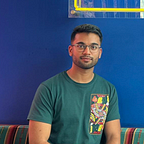3 Use Cases for Blockchain that aren’t NFT or Cryptocurrency-related
It’s all the rage and buzz in the blockchain space — the volatility of Bitcoin and Ethereum prices, and the purchases of NFTs such as Cryptopunks and the Bored Ape Yacht Club. These are polarized and controversial topics: Should Bitcoin and other cryptocurrencies be standardized as a medium of exchange? Do NFTs actually support artists, or are they just a fluke under the guise of supporting artists?
However, there’s so much more to blockchain than crypto and NFTs.
But first, what is blockchain technology? Blockchain is essentially a public registry of information that enables information to be securely accessed and transferred, while maintaining anonymity and authenticity of data (i.e. immutable). While it is customizable for different use cases as described below via smart contracts, information/edits to the blockchain are public and traceable to ensure accuracy and transparency.
Here are some other practical use cases that don’t revolve around crypto or NFTs. [Spoiler Alert: Education, Healthcare, & Politics]
Education | Student Identity and Academic Records in Ethiopia
The Cardano cryptocurrency announced a partnership with the Ministry of Education in Ethiopia to provide over five million students with a student identity, inclusive of their academic progress, notable awards, skill sets, and general educational context.
This is especially useful for when students transfer schools. A comprehensive student identity and record will ensure frictionless transitions in academic continuity. Students will also be provided with a physical ID for access, but the information will be retained on the blockchain.
The blockchain framework will essentially include basic identification, academic performance, and also certify the student for any particular fields that they have proven proficiency in. Given that it is on the blockchain, it can easily be expanded with other future additions.
Blockchain-based student identification is also a rare example where technologies begin in developing markets (out of necessity), instead of metropolitan areas such as New York City or San Francisco.
This is also a first step in democratizing access to education, especially as we enter into a globalized world of MOOCs and online learning.
Healthcare | Supply Chain Management and Medical Records During COVID-19
Healthcare and medical records are a prime example of utilizing the blockchain framework for its core advantages: transparency and immutable blocks of information.
Blockchain allows all patient records to be securely stored (and transferred as necessary), but also allows different access points for different use cases. For example, there can be a research access point which can securely offer limited visibility for data aggregation. For insurance companies and medical professionals, patient health history can be transferred and data accurately retained for medical history review. We can witness a live example of such technology with Patientory, a startup that uses blockchain to decentralize access to patient history, while making it less prone to data breaches.
During COVID-19, the blockchain framework could be used to:
- Verify vaccination status for patients;
- Track supply for vaccinations and pharmaceutical products;
- New operational efficiencies to determine and automate next steps for the supply chain, particularly using smart contracts within blockchain.
Similar to online learning and education, COVID-19 has also unsurfaced the inevitable need for autonomy, security, efficiency, speed, and transparency within healthcare.
Politics | Voting on the Blockchain
A political example of blockchain utilization is voting. While elections are the core of any democratic government, it is often riddled with citizen mistrust and high expense/inefficiency in running voting booths (both of which can result in political unrest during elections).
The voting process consists of two key components: voter registration and the voting record itself. With the support of smart contracts, blockchain-based voting can verify a voter’s identity, provide voting status, and aggregate voting records with unparalleled speed and transparency.
Blockchain-based voting increases accessibility, while maintaining anonymity, of the voting process. It has the potential to increase the number of voters, as there are fewer barriers to entry and takes less time to accomplish. It also eliminates the need for paper voting, which reduces the carbon footprint associated with voting today.
An example of a blockchain-driven voting technology is Follow My Vote, a company that offers a voting platform where tallying and auditing of votes happens real-time on the blockchain.
Conclusion
While cryptocurrency and NFT remain a magnet for controversy and skepticism, there are value propositions for blockchain that are unrelated to the volatility of the crypto market. Blockchain frameworks as a technology can democratize how we store, use, and transfer data in different industries today — whether it’s ensuring a frictionless transition for students within education or securely sharing sensitive medical records across healthcare agencies.
